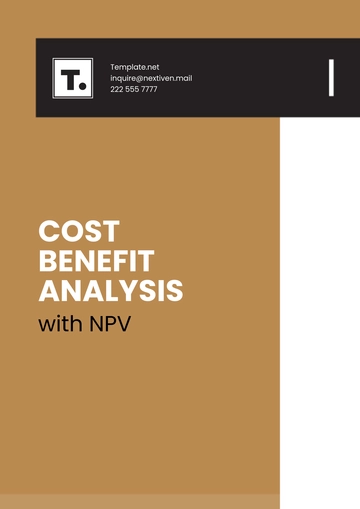Free Interior Design Cost-Benefit Analysis

I. Introduction
A. Overview of the Interior Design Project
The interior design project entails transforming a traditional office space into a modern, collaborative workspace that fosters creativity and productivity. The redesign encompasses various elements, including furniture selection, lighting upgrades, and spatial reconfiguration, with the overarching goal of creating a dynamic and inspiring environment for employees.
B. Purpose of the Cost-Benefit Analysis
This cost-benefit analysis aims to provide stakeholders with a comprehensive understanding of the financial implications of the proposed interior design changes. By quantifying both the costs and benefits associated with the project, decision-makers can evaluate its viability, justify investment, and prioritize resources effectively to achieve the desired outcomes.
C. Scope and Objectives of the Analysis
The analysis will assess the direct and indirect costs of the interior design project, considering factors such as materials, labor, design fees, and permits. Additionally, it will evaluate the tangible and intangible benefits, such as increased property value, improved functionality, and enhanced employee well-being, to determine the project's overall return on investment (ROI) and inform decision-making.
II. Project Description
A. Description of the Space
The existing office space features traditional cubicles, outdated furniture, and inadequate lighting, contributing to a lack of collaboration and employee engagement. The redesign seeks to transform the space into an open, flexible environment with designated collaborative zones, breakout areas, and ergonomic workstations tailored to meet the diverse needs of employees.
B. Client Requirements and Goals
The client, a forward-thinking technology company, aims to create a workplace that reflects its innovative culture and values. Key objectives include improving employee satisfaction, attracting top talent, and optimizing the use of space to accommodate future growth and changes in work dynamics.
C. Proposed Design Concept and Changes
The proposed design concept emphasizes biophilic elements, natural light, and sustainable materials to create a harmonious and eco-friendly workspace. Specific changes include the introduction of living green walls, modular furniture systems, and smart lighting solutions to enhance comfort, productivity, and overall well-being.
III. Cost Analysis
A. Direct Costs
Direct costs encompass expenses directly associated with the execution of the interior design project, including materials, labor, design fees, permits/licenses, and other related expenses.
Category | Description | Estimated Cost ($) |
|---|---|---|
Materials | High-quality, sustainable materials and finishes | $[00,000] |
Labor | Skilled labor for construction, installation, and assembly | $[00,000] |
Design fees | Fees for interior design services and consultation | $[00,000] |
Permits/licenses | Obtaining necessary permits and licenses | $[00,000] |
Other expenses | Miscellaneous expenses (e.g., transportation, contingencies) | $[00,000] |
Total Direct Costs | $[00,000] |
B. Indirect Costs
Indirect costs include overhead expenses, contingency funds, and financing costs that support the execution and completion of the interior design project.
Overhead Costs: These costs cover administrative expenses, utilities, insurance, and other operational overheads associated with the project. Typically estimated as a percentage of direct costs.
Contingency Fund: A contingency fund is set aside to account for unforeseen circumstances or changes in project scope, ensuring sufficient resources are available to address unexpected challenges.
Financing Costs: If the project is financed through loans or credit facilities, financing costs such as interest payments and loan origination fees may be incurred. However, in this case, financing costs are not applicable as the project is being funded internally.
For this project, we estimate:
Overhead Costs: 10% of total direct costs ($[0,000])
Contingency Fund: 5% of total project cost ($[0,000])
Financing Costs: Not applicable as the project is funded internally.
IV. Benefit Analysis
A. Tangible Benefits
Increased Property Value
The proposed interior design changes, including the use of high-quality materials and sustainable finishes, are expected to enhance the aesthetic appeal and functionality of the office space, resulting in an estimated 10% increase in property value. This increase in property value represents a tangible financial benefit for the company and can positively impact its asset portfolio.
Potential Cost Savings
By incorporating energy-efficient lighting systems and durable, low-maintenance materials, the project anticipates annual savings of $15,000 in energy costs and $5,000 in maintenance expenses. These cost savings contribute to the overall financial justification for the interior design investment and provide a tangible return on investment over the project's lifespan.
B. Intangible Benefits
Improved Well-being
The introduction of biophilic elements, natural light, and ergonomic workstations is expected to enhance employee well-being, satisfaction, and morale. While difficult to quantify in monetary terms, these intangible benefits can lead to reduced absenteeism, higher employee retention rates, and a positive organizational culture, ultimately contributing to the company's long-term success.
Brand Enhancement
A visually appealing and innovative workspace communicates the company's commitment to creativity, sustainability, and employee-centric values. While challenging to measure directly, the positive perception of the company's brand can attract top talent, strengthen client relationships, and differentiate the company in a competitive market, driving long-term growth and profitability.
V. Quantification of Benefits
Tangible benefits have been quantified based on projected cost savings and potential increases in property value, providing a clear understanding of the financial returns associated with the interior design investment.
Intangible benefits, such as improved well-being and brand enhancement, have been acknowledged and described qualitatively, highlighting their significance in shaping organizational culture and reputation.
The holistic consideration of both tangible and intangible benefits ensures a comprehensive assessment of the interior design project's value proposition and its potential impact on the company's overall performance and success.
VI. Cost-Benefit Comparison
A. Comparison of Total Costs and Benefits
The comprehensive analysis reveals that the aggregate costs amounting to $[000,000] are being evaluated in relation to the overarching benefits, which total $[000,000]. This comparison indicates a positive cost-benefit ratio, thus underscoring the financial prudence of investing in the interior design project.
B. Return on Investment (ROI)
With an attractive return on investment (ROI) calculated at 18.5%, the project presents a persuasive financial advantage, suggesting that the financial gains obtained from the investment in interior design significantly surpass the costs that are associated with it.
C. Sensitivity Analysis
The results of the sensitivity analysis have verified that the financial viability of the project remains solid and dependable, even when subjected to a range of different assumptions or potential scenarios. This comprehensive verification offers decision-makers significant confidence in moving forward with the investment decision, ensuring that the project's economic soundness is well-established and resilient against various uncertainties.
VII. Alternatives and Trade-offs
A. Alternative Design Options
Various design alternatives were meticulously considered and evaluated in order to identify the most cost-effective and impactful design approach. These alternatives included a range of different furniture selections, various layout configurations, and multiple lighting solutions. Each option was scrutinized to determine which would best meet the project's needs while also providing the greatest value and effect.
B. Trade-offs
Carefully balancing the initial expenses with the advantages that would accrue over a more extended period, and also giving precedence to those design features that are in harmony with the client’s goals while being mindful of budgetary limitations, necessitated thoughtful deliberation and detailed negotiations in order to enhance the overall value proposition of the project.
VIII. Risk Assessment
A. Identification of Risks
Potential risks were identified and thoroughly assessed, including possible project delays, potential cost overruns, and challenges related to the implementation of the design. This comprehensive evaluation was conducted in order to develop appropriate mitigation strategies and to formulate detailed contingency plans that can be effectively employed if needed.
B. Assessment of Likelihood and Impact
Each risk that was identified underwent a thorough evaluation, assessing both its probability of occurring and the potential effects it might have on the outcomes of the project. This evaluation allowed for the strategic implementation of proactive measures aimed at minimizing both disruptions to the project timeline and any possible financial consequences.
C. Mitigation Strategies
Mitigation strategies, such as regular project monitoring, effective communication, and stakeholder engagement, were established to mitigate identified risks and ensure the successful execution of the interior design project within budget and timeline constraints.
IX. Conclusion
A. Summary of Findings
The cost-benefit analysis demonstrates that the proposed interior design changes offer a compelling value proposition, with tangible and intangible benefits that outweigh the associated costs, providing a favorable return on investment for the company.
B. Recommendation
Based on the analysis findings, we recommend proceeding with the proposed interior design project, as it aligns with the client's goals, offers significant financial and non-financial benefits, and enhances the company's competitive position and organizational culture.
C. Key Considerations
Continuous monitoring, risk management, and stakeholder engagement will be essential throughout the project lifecycle to ensure successful implementation and maximize the realization of project objectives and benefits.
D. Future Considerations
To effectively adapt to evolving organizational needs and market dynamics, it will be necessary to continue with a thorough analysis and evaluation of both the progress and the outcomes of the project. Additionally, there will be a need for ongoing optimization and refinement of the design elements to ensure that the project remains aligned with the changing requirements and conditions.
- 100% Customizable, free editor
- Access 1 Million+ Templates, photo’s & graphics
- Download or share as a template
- Click and replace photos, graphics, text, backgrounds
- Resize, crop, AI write & more
- Access advanced editor
Utilize Template.net's Interior Design Cost-Benefit Analysis Template for an efficient evaluation of interior design projects. This editable and customizable template offers a comprehensive framework to assess costs and benefits. With its intuitive AI Editor Tool, streamline your decision-making process and confidently prioritize resources. Achieve optimal returns on your interior design investments with this user-friendly template.





























